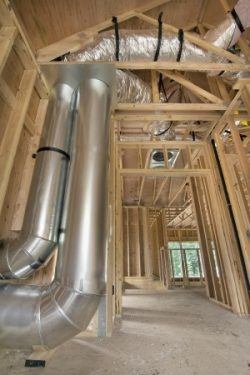HVAC Requirements Have Changed

On July 1st 2014, a few major changes to a California law called Title 24 went into effect. What exactly are these changes and how do they affect you?
Well, three of the most notable changes to HVAC requirements are: mandated air duct sealing and testing in all climate zones, a raise in the minimum insulation required in air ducts in certain climate zones, and new requirements added to Home Energy Rating System tests.
Air Duct Sealing
 As of last July, all air ducts are required by law to be completely sealed by your HVAC company. This added regulation ensures that your HVAC company takes care of poorly connected, corroded, or separated air ducts which can account for 10-30% of heating or cooling loss in your home, without you having to check the ducts yourself. This new requirement saves you time, money, and stress – and assures that your HVAC system is running smoothly and efficiently.
As of last July, all air ducts are required by law to be completely sealed by your HVAC company. This added regulation ensures that your HVAC company takes care of poorly connected, corroded, or separated air ducts which can account for 10-30% of heating or cooling loss in your home, without you having to check the ducts yourself. This new requirement saves you time, money, and stress – and assures that your HVAC system is running smoothly and efficiently.
Higher Minimum Insulation Requirements
The second most notable change to Title 24 is the required amount of insulation in the air ducts in your home. Previously, the requirement was R-4.2, and it has just been raised to R-6.0. Simply put, if you live in certain climate zones, it is necessary that your HVAC company is aware of this change and uses duct insulation that is 1.5 times thicker than the insulation previously required. At Alps, we install R-8 ducts, which easily reach maximum efficiency and help you qualify for Energy Upgrade CA rebates. This prevents loss of conditioned air from your place of residence and makes your home more secure as well.
New HERS Test Standards
Another change included in Title 24 is an update of the Home Energy Rating System, or HERS, test requirements. HERS tests examine refrigerant change in your air duct system – and now the standards are more rigorous. Two of the main tests conducted by HERS raters are the cooling coil airflow test and fan watt draw verification. With the updated requirements, the cooling coil in your HVAC system must now deliver 350 cfm/ton output when in cooling mode, while your fan must meet the standard of 0.58 watts per cfm of airflow in the system.
Here at Alps, we already adhere to these changes made to Title 24 and work hard to go above and beyond to match even stricter requirements set down by Energy Star. It is very important to make sure that whoever you choose as your HVAC provider complies with all of these new state regulations – a step in the right direction to better, more efficient HVAC systems in California. In this way, you can enjoy peace of mind and the benefits of a more comfortable home.

